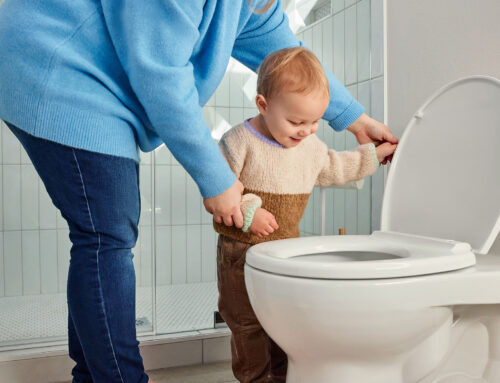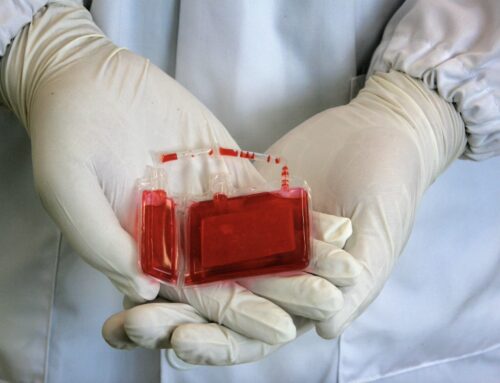Baby Hygiene: Baths, Nails, Hair & Skin Care
How often and how should I bathe my baby?
Bathing your baby can be a delightful experience, and it’s also important for their hygiene. Here are some general guidelines:
- Frequency: For newborns, bathing 2-3 times a week is sufficient. As your baby grows and becomes more active, you can bathe them more frequently, up to once a day if needed. However, daily bathing is not necessary for most babies.
- Timing: It’s often easiest to bathe your baby when they are alert but not too hungry or tired. Many parents find that bathing their baby in the evening can help with establishing a bedtime routine.
- Water temperature: The water should be comfortably warm, around 37-38°C (98-100°F). Always check the water temperature with your elbow or the inside of your wrist to ensure it’s not too hot.
- Duration: Keep the bath short, around 5-10 minutes, to prevent your baby from getting too cold. Use this time to gently wash their body, avoiding the face until the end to prevent them from getting cold too quickly.
- Gentle handling: Support your baby’s head and neck with one hand and use your other hand to gently wash them. Use a mild, baby-specific soap and shampoo to avoid irritation. Pay attention to skin folds, genitals, and the umbilical cord stump (if still attached) when cleaning.
- Drying: Pat your baby dry with a soft towel, paying special attention to skin folds. You can also apply a gentle baby moisturizer if their skin is dry.
Always supervise your baby closely during the bath, and never leave them unattended, even for a moment, in or near water.
How often should I change my baby’s diapers?
It’s important to change your baby’s diaper regularly to keep their skin healthy and prevent diaper rash. Here are some general guidelines:
- Newborns: Newborns typically need to be changed every 2-3 hours, or whenever they have a bowel movement.
- Older babies: As your baby gets older, they may need fewer changes during the day, but it’s still important to check their diaper regularly and change it promptly when wet or soiled.
- Overnight: Overnight, you may need to change your baby’s diaper once or twice, depending on how long they sleep and how much they urinate.
- Signs of discomfort: If your baby seems uncomfortable or is showing signs of diaper rash, such as redness or irritation, you may need to change their diaper more frequently.
- Frequency of bowel movements: Babies who have more frequent bowel movements may need to be changed more often.
Remember to clean your baby’s diaper area gently but thoroughly during each change, and use a barrier cream to protect their skin if needed.
What should I do if my baby develops diaper rash?
Diaper rash is a common condition that can occur when your baby’s skin is in contact with urine or stool for too long. Here are some steps you can take to help treat and prevent diaper rash:
- Keep the area clean and dry: Change your baby’s diaper frequently and gently clean the diaper area with mild soap and water. Pat the area dry instead of rubbing.
- Use a barrier cream: Apply a thick layer of zinc oxide or petroleum jelly-based diaper cream to create a barrier between your baby’s skin and the diaper. This can help protect the skin and promote healing.
- Give diaper-free time: Let your baby go without a diaper for short periods to allow the skin to air out and heal. Place your baby on a towel or waterproof mat to catch any accidents.
- Choose the right diapers: Use diapers that are breathable and absorbent. Avoid diapers that are too tight, as they can trap moisture and irritate the skin.
- Avoid irritants: Try to avoid using wipes or products that contain alcohol, fragrances, or other potential irritants. Use a soft cloth and warm water instead.
- Consult your pediatrician: If the rash persists or is severe, consult your pediatrician. They may recommend a different treatment, such as a medicated cream or ointment.
Remember, every baby is different, so it may take some trial and error to find the best approach for your little one.
How often should I trim my baby’s nails?
Trimming your baby’s nails is important to prevent them from scratching themselves. Here are some general guidelines for nail care:
- Frequency: You may need to trim your baby’s nails every few days to once a week, depending on how quickly their nails grow and how much they scratch.
- Technique: Use baby nail clippers or baby scissors with rounded tips to trim your baby’s nails. It’s often easier to do this when your baby is asleep or relaxed to prevent accidental nicks.
- Length: Trim the nails so they are flush with the tips of their fingers. Be cautious not to cut the nails too short, as this can cause discomfort or bleeding.
- File or smooth edges: After trimming, you can use a soft emery board or baby nail file to smooth any rough edges.
- Avoid biting or tearing: It’s important not to bite or tear your baby’s nails, as this can lead to uneven edges and increase the risk of infection.
- Be cautious: Baby’s skin is delicate, so be gentle and take your time. If you’re unsure, ask your pediatrician or a healthcare provider to show you the proper technique.
How should I care for my child’s umbilical cord?
Caring for your child’s umbilical cord stump is important to prevent infection. Here’s how to care for it:
- Keep it clean and dry: Keep the stump clean and dry. Fold diapers down to expose the stump to air and avoid covering it with the diaper.
- Avoid submerging in water: While sponge baths are recommended until the stump falls off, avoid submerging the stump in water to prevent it from becoming soggy, which can increase the risk of infection.
- Use alcohol: Some healthcare providers recommend cleaning the stump with a cotton swab dipped in rubbing alcohol once or twice a day. However, this practice is not universal, so it’s best to follow your healthcare provider’s advice.
- Watch for signs of infection: Monitor the stump for signs of infection, such as redness, swelling, pus, or a foul odor. If you notice any of these signs, contact your healthcare provider.
- Let it fall off naturally: The stump will usually fall off on its own within one to three weeks. Avoid pulling on it, even if it looks like it’s ready to come off, as this can cause bleeding and increase the risk of infection.
- Clothing: Dress your baby in loose-fitting clothing to prevent rubbing and irritation of the stump.
If you have any concerns about your child’s umbilical cord stump, or if it’s not healing properly, consult your healthcare provider for guidance.
Should I moisturize my baby’s skin?
Moisturizing your baby’s skin can help keep it soft and prevent dryness, especially in areas prone to dryness like the cheeks, arms, and legs. Here are some tips for moisturizing your baby’s skin:
- Choose a gentle, fragrance-free moisturizer: Look for a moisturizer specifically formulated for babies, as adult products may contain fragrances or other ingredients that can irritate your baby’s skin.
- Apply moisturizer after bathing: Pat your baby’s skin dry after a bath and apply moisturizer while their skin is still slightly damp. This can help lock in moisture.
- Use a small amount: You only need a small amount of moisturizer to cover your baby’s skin. Too much can make their skin greasy and clog pores.
- Avoid certain areas: Avoid applying moisturizer to areas where the skin folds, such as the neck and groin, as this can create a moist environment that can lead to irritation.
- Monitor for reactions: If you notice any redness, rash, or irritation after applying moisturizer, stop using it and consult your healthcare provider.
It’s also important to dress your baby in breathable, loose-fitting clothing and use mild, fragrance-free laundry detergent to help prevent irritation and dryness. If you have any concerns about your baby’s skin or if they have a skin condition such as eczema, consult your healthcare provider for advice on the best skincare routine.




